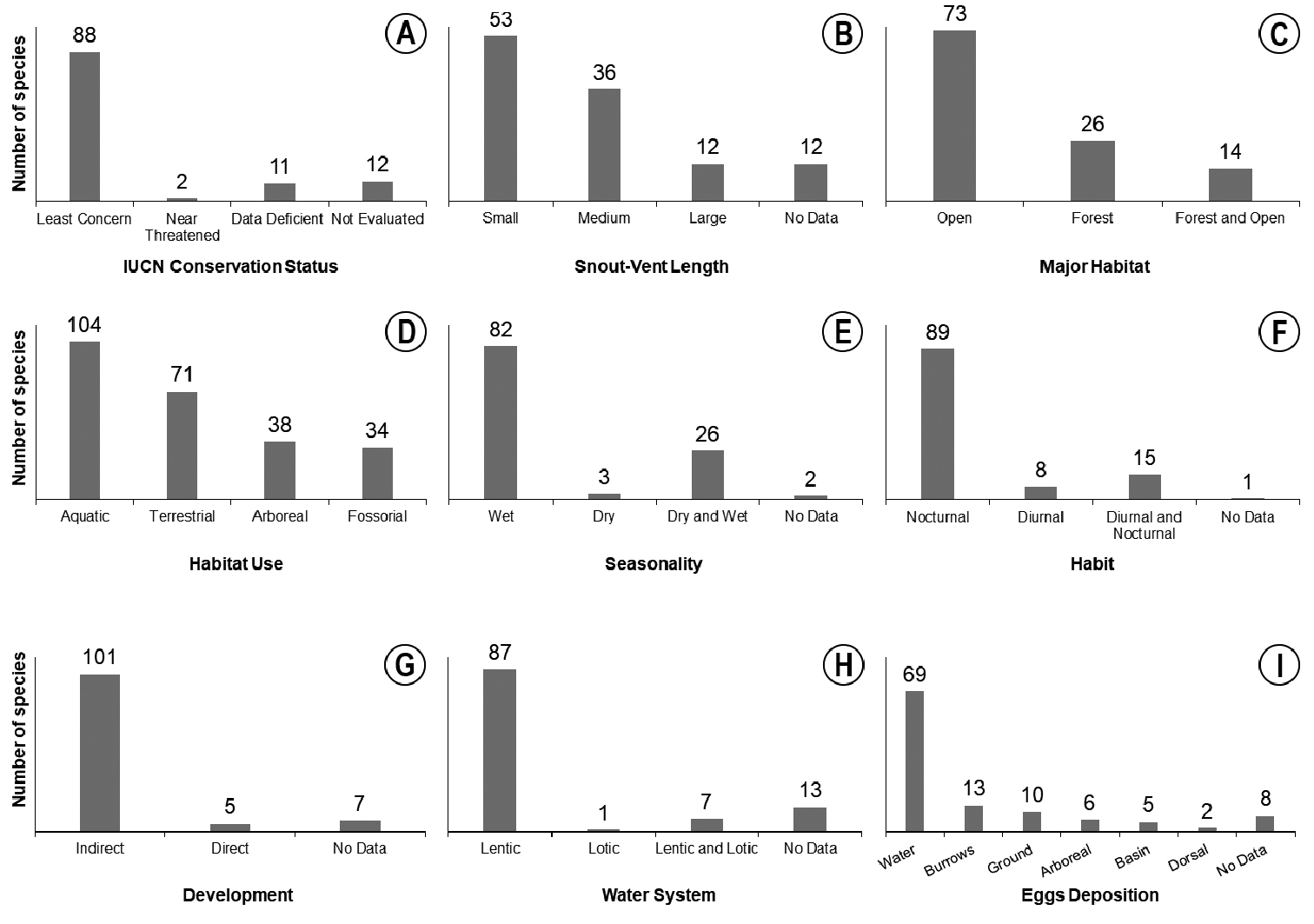
|
||
|
Species counting across levels of ecological traits for amphibians in Upper Paraguay River Basin. A Conservation status following International Union for Conservation of Nature and Natural Resources Red List of Threatened Species (2020) B body size category according to the snout-vent length (SVL) of each species. Categories correspond to row values (in millimeters – mm) from SVL divided in Small (0–39 mm), Medium (40–79 mm), Large (+ 80 mm), and No Data when the SVL was not available in the literature C major Habitat where the species is more associated and it can be Open areas, Forest or both D habitat Use for each species as Aquatic, Arboreal, Fossorial and/or Terrestrial E the seasonality of species showing which are more active in the Wet, Dry or both season F habit of the species classified according to their period of activity, which may be diurnal, nocturnal or both G larval Development with species showing direct (without tadpole stage) or indirect (with tadpole) development H water system used by the species breeding in Lotic environment, Lentic or both; and I the surface of the Eggs Deposition of each species and it can be in Water, Burrows, Ground, Arboreal, Basin or on the specimen Dorsal region. A total of 108 species were used for Water System and Eggs Deposition due to the Direct Development species. |